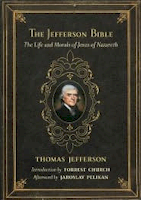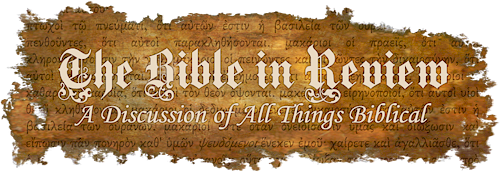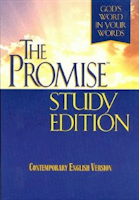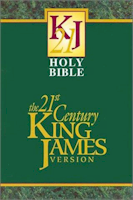 Bible Abbreviation: JB
Bible Abbreviation: JBISBN: 798-0-8070-7714-6
Publisher: Boston: Beacon Press
Publication Date: 1989
Pages: 171
Binding: Hardcover
Size: 7.25 x 5.25 x .75
Features:
This small volume consists of a short preface, an introduction (both by Forrest Church) and a few photographic reproductions of Jefferson’s original manuscript. This is followed by the text which in this volume contains only the English. It is presented in a two columns with one column showing the source of the verses. Following the text is a commentary by Jaroslav Pelikan. This, in turn, is followed by an index of verses sorted by the gospel from which they were drawn.
Comments and Observations:
In 1804, three years into his Presidency of the United State of America, Jefferson began a project he titled The Philosophy of Jesus of Nazareth. Some years later, on 9 January 1816, Thomas Jefferson wrote to his long time friend, Charles Thomson, about this book he had composed from the four gospels of the New Testament.“I, too, have made a wee-little book from the same materials, which I call the Philosophy of Jesus; it is a paradigma of his doctrines, made by cutting the texts out of the book, and arranging them on the pages of a blank book, in a certain order of time or subject. A more beautiful or precious morsel of ethics I have never seen; it is a document in proof that I am a real Christian, that is to say, a disciple of the doctrines of Jesus.”1
In 1819 he began anew and it is this second work which the world knows as the Jefferson Bible but which Jefferson called “The Life and Morals of Jesus of Nazareth”. In spite of its nickname, the Jefferson Bible is not actually a Bible or even a New Testament. Rather, it is a much abbreviated harmony or redaction of the four gospels. In its original format, it was arranged in four columns with each column being in either Greek, Latin, French or English. Jefferson purchased three sets of two identical Bibles. The Greek and Latin text was a parallel edition comprising the Leusden’s Greek Testament paired with the Montanus’ Latin. The French edition was identical to the Paris Ostervald “le Nouveau Testament corrige sur le Grec.” The English edition was the King James Version. One could therefore compare the Jefferson Bible to Tatian’s Diatessaron crossed with Ximenes’ Complutensian Polygot.
With a razor in hand Jefferson detached the words of Jesus along with a minimal amount of history. These snippets he pasted into a chronological/topical order comingling verses from each of the gospels and disregarding any historical order other than his own. He then pasted them into a book of blank pages. (Note: The volume under review is lacking the Greek, Latin and French versions.) A page from the Jefferson Bible follows:
| L. 3/1 | Now in the fifteenth year of the reign of Tiberius Caesar, Pontius Pilate being governor of Judaea, and Herod being tetrarch of Galilee, and his brother Philip tetrarch of Ituraea and of the region of Trachonitis, and Lysanias the tetrarch of Abilene, |
| 2 | Annas and Caiaphas being the high priests, |
| Mk. 1/4 | John did baptize in the wilderness, |
| Mt. 3/4 | And the same John had his raiment of camel's hair, and a leathern girdle about his loins; and his meat was locusts and wild honey. |
| 5 | Then went out to him Jerusalem, and all Judaea, and all the region round about Jordan, |
| 6 | And were baptized of him in Jordan, |
| Mt. 3/13 | Then cometh Jesus from Galilee to Jordan unto John, to be baptized of him. |
| L. 3/23 | And Jesus himself began to be about thirty years of age, |
| J. 2/12 | After this he went down to Capernaum, he, and his mother, and his brethren, and his disciples: and they continued there not many days. |
| 13 | And the Jews' passover was at hand, and Jesus went up to Jerusalem, |
| 14 | And found in the temple those that sold oxen and sheep and doves, and the changers of money sitting: |
| 15 | And when he had made a scourge of small cords, he drove them all out of the temple, and the sheep, and the oxen; and poured out |
Jefferson recorded the order of the verses he used in a “Table of the Texts from the Evangelists employed in this Narrative and of the order of their arrangement.” From this table it is relatively easy to see what Jefferson removed and what he retained.
Old Testament Comparative Verse: Psalms 23:1-6 – N/A
New Testament Comparative Verse: Matthew 5:1-12 (Note: this is identical to the King James Version from which it was taken.)
| Mt. 5/1 | And seeing the multitudes, he went up into a mountain: and when he was set, his disciples came unto him: |
| 2 | And he opened his mouth, and taught them, saying, |
| 3 | Blessed are the poor in spirit: for theirs is the kingdom of heaven. |
| 4 | Blessed are they that mourn: for they shall be comforted. |
| 5 | Blessed are the meek: for they shall inherit the earth. |
| 6 | Blessed are they which do hunger and thirst after righteousness: for they shall be filled. |
| 7 | Blessed are the merciful: for they shall obtain mercy. |
| 8 | Blessed are the pure in heart: for they shall see God. |
| 9 | Blessed are the peacemakers: for they shall be called the children of God. |
| 10 | Blessed are they which are persecuted for righteousness’ sake: for theirs is the kingdom of heaven. |
| 11 | Blessed are ye, when men shall revile you, and persecute you, and shall say all manner of evil against you falsely, for my sake. |
| 12 | Rejoice, and be exceeding glad: for great is your reward in heaven: for so persecuted they the prophets which were before you. |
Strengths & Weaknesses:
Thomas Jefferson wished his book to represent the unobscured morals and philosophy of Jesus held together within a framework consisting of the barest essentials from the events from Christ's life. To that end he succeeded admirably. However, on the cutting room floor, Jefferson left the virgin birth, the miracles, the resurrection, and the lives and teachings of his apostles. In short, in paring all but the morals and philosophy of Jesus from the Bible, Jefferson also cut out the heart of Christianity.1 Excerpts from the "Correspondence of Thomas Jefferson"
(http://www.cooperativeindividualism.org/jefferson_m_03.html) Retrieved on 21 July 2011



